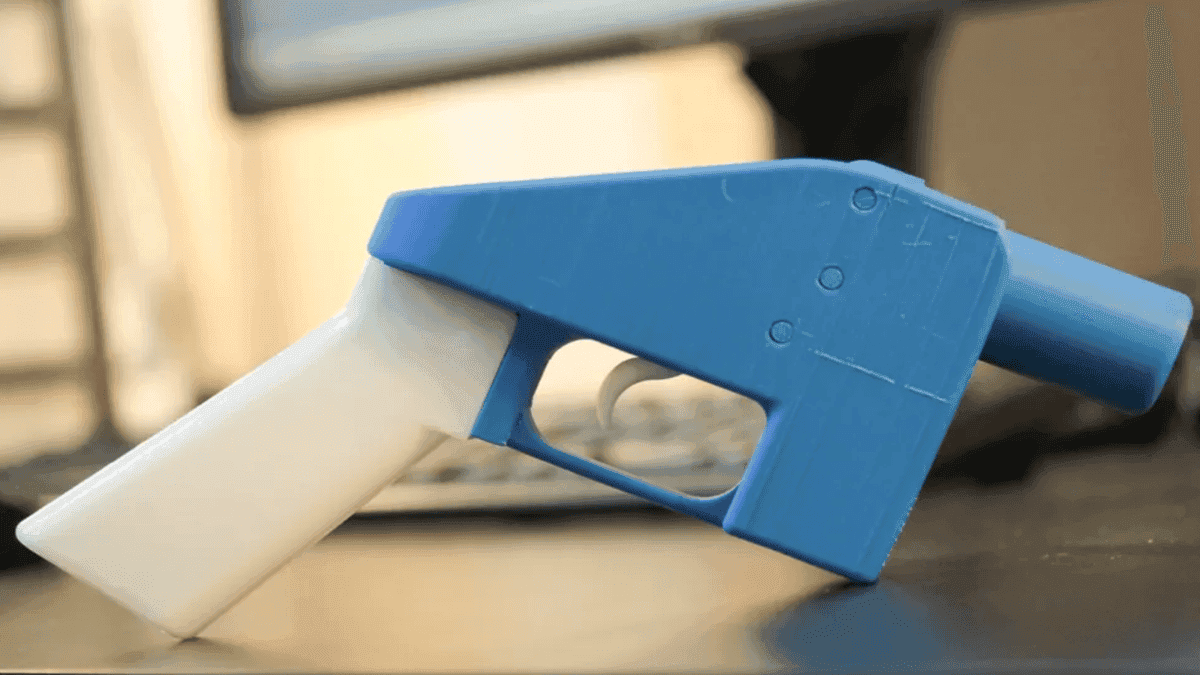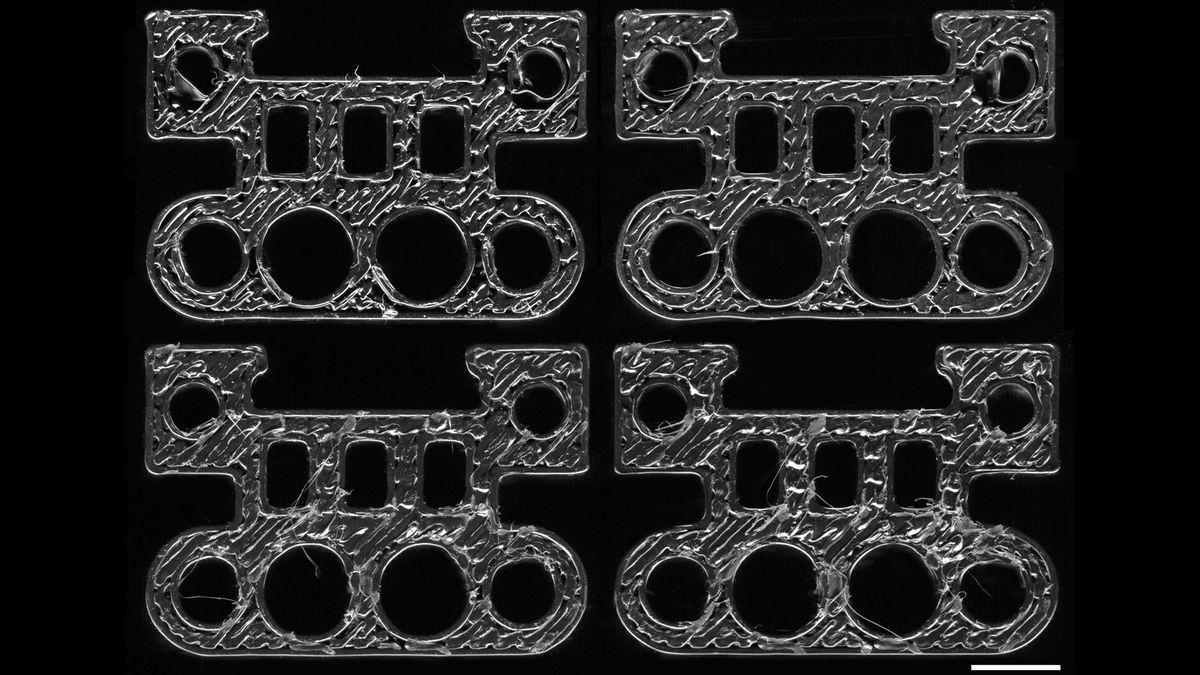AI Takes Center Stage in Combating 3D-Printed Ghost Guns
2 Sources
2 Sources
[1]
We spoke with Thingiverse about its new AI-driven ghost gun detection that eliminates designs for 3D printing - companies turn to AI to block production of ghost guns
Manhattan District Attorney Alvin L. Bragg, Jr. has set his sights on eliminating 3D printed "ghost guns", which are firearms illegally manufactured with the use of a 3D printer and lack serial numbers to allow tracking or registration. This has caused Thingiverse, the world's largest platform for hosting 3D models for printing, to institute new restrictions in an effort to combat designs that can be used to manufacture ghost guns. We spoke with Thingiverse about its new policies and how it plans to enact them. Ghost guns have existed long before 3D printing came along, and could be made from simple metal pipes and springs by a talented metalsmith. It should be noted that in the United States, the Second Amendment allows citizens to possess and manufacture many types of firearms for personal use without the need for background checks or registration of the completed weapon. Firearms made for sale fall into an entirely different category and must be properly regulated, tracked, and registered. As we reported earlier, New York investigations have triggered a crackdown on 3D printed gun files at Thingiverse, the world's oldest and largest 3D file-sharing site. We reached out to Thingiverse to find out how the company planned to keep 3D-printed firearms off the platform. "At Thingiverse, safety and creativity go hand in hand," said Rob Veldkamp, the VP of Thingiverse, in a statement emailed to Tom's Hardware. "We're reinforcing our long-standing ban on sharing designs for functional firearms, critical gun parts, or accessories that boost lethality while keeping cosplay props, airsoft models, and toy replicas welcome." Thingiverse, a file-sharing site originally set up by 3D printer manufacturer MakerBot, has operated under the umbrella of Ultimaker since 2022, when the companies merged. The site is dedicated to hosting free files for the 3D printing community and is a huge resource for many educational programs, especially those that use MakerBot printers. Perhaps because of this tight connection with students and education, Thingiverse has long held an anti-firearms policy. The platform prohibits uploading firearms, their components, or lethal accessories. Details on the anti-firearm policy can be found on the Thingiverse blog here. It should be noted that Thingiverse's policy is against "firearms" and not guns in general. The company has no problem with replica props, airsoft guns, sci-fi blaster toys, or gun-like objects that shoot candy. "Our efforts are aimed squarely at preventing the sharing of harmful and illegal firearms," said Arun Chapman, who writes the Thingiverse company blog. Thingiverse will keep dangerous firearms off the platform through AI and human moderation. An AI tool will scan uploads and flag suspicious-looking files. Then, a real live human will decide if the computer identified a weapon or a harmless, gun-shaped object. "AI will be used only to flag potentially harmful designs, but a human will always be the one to decide if something should be removed," Chapman told Tom's Hardware. If a file is removed from Thingiverse, it will be removed by a person, not a machine. The Manhattan District Attorney also sent a letter to Chinese 3D printer manufacturer Creality back in March 2025, asking CEO Adun Ao to implement AI tools to prevent printers from creating firearms and to remove weapons from the file-sharing site Creality Cloud. The district attorney cited software called "3D GUN'T" produced by Print & Go that claims to identify gun parts by using AI algorithms to sift through CAD files. Print & Go, created by a small Spanish company, is a workflow system used to remotely manage print farms. It claims to be able to prevent guns from being 3D printed by analyzing files and comparing them to a library of known firearms. It would also use AI to determine if any file even looks like a gun, which could trigger alarms if harmless props or toys were printed. As explained on the Print & Go website, the program can be installed in the printer's firmware to operate even when the machine is offline. It is a highly invasive system that would also have access to a printer's built-in camera to further identify "gun-shaped objects" and would include tracking to provide personal data to the authorities if it detects files it does not deem appropriate.
[2]
Your cheap 3D printer can print a gun, and lawmakers are scrambling to catch up
Lawmakers want 3D printer makers to build in AI tools that block firearm printing The rapid spread of 3D-printed gun templates online is drawing scrutiny from law enforcement and lawmakers, as regulators begin to deal with the unintended consequences of accessible digital manufacturing. Popular platform Thingiverse, known as the world's largest repository of 3D printer model files, has now become a central focus in efforts to curb the spread of ghost guns. Following an investigation by the New York Police Department, hundreds of downloadable weapon-related files were found on Thingiverse - files which, once downloaded, can be used by almost anyone with a 3D printer to make working firearm parts. In response, Thingiverse has added automated tools designed to detect and block uploads of gun files before they go live on the site. This is an urgent issue within 3D printing communities, and as platforms grow, managing harmful or illegal content becomes much harder. Access to dangerous blueprints is tough to control, especially when file sites operate with little oversight, and along with platform changes, officials are now turning to hardware makers. Manhattan District Attorney Alvin Bragg has asked companies like Bambu Lab to build AI systems that can scan CAD files before printing. The goal is to train models to spot gun blueprints and stop them at the printer itself. Law enforcement agencies are working to build roadblocks that make it harder to create untraceable firearms. Beyond prevention, investigators are also exploring ways to trace printed weapons back to their source. Researchers are studying toolmarks left on printed objects - tiny patterns made by a printer's unique settings, nozzle shape, and filament path. These marks may not match one exact printer, but they can help narrow down where a weapon came from. Factors like extruder size, print temperature, and bed surface all affect these marks, which makes tracking more complex. Even so, this kind of forensic work shows that printed weapons are not as anonymous as many once believed. Whether made on a high-end 3D engraver or a cheap desktop unit, printed objects may carry clues that link them to certain machines. With ghost guns now easier to make than ever, the race between access and control is clearly underway, and the outcome is still unknown.
Share
Share
Copy Link
Thingiverse and other 3D printing platforms are implementing AI-driven detection systems to prevent the spread of 3D-printed firearm designs, as lawmakers and law enforcement agencies grapple with the challenges posed by ghost guns.
AI-Driven Detection Systems Combat 3D-Printed Ghost Guns
In response to growing concerns over the proliferation of 3D-printed firearms, commonly known as "ghost guns," major 3D printing platforms and lawmakers are turning to artificial intelligence as a solution. Thingiverse, the world's largest repository of 3D printer model files, has implemented new AI-driven detection systems to prevent the upload and sharing of firearm designs
1
.Rob Veldkamp, VP of Thingiverse, stated, "We're reinforcing our long-standing ban on sharing designs for functional firearms, critical gun parts, or accessories that boost lethality while keeping cosplay props, airsoft models, and toy replicas welcome"
1
. This move comes after investigations by the New York Police Department uncovered hundreds of downloadable weapon-related files on the platform2
.
Source: TechRadar
AI and Human Moderation: A Two-Pronged Approach
Thingiverse's new strategy combines AI technology with human oversight. An AI tool scans uploads and flags suspicious-looking files, which are then reviewed by human moderators. Arun Chapman, who writes the Thingiverse company blog, emphasized, "AI will be used only to flag potentially harmful designs, but a human will always be the one to decide if something should be removed"
1
.This approach aims to strike a balance between maintaining user creativity and ensuring platform safety. The AI system is designed to distinguish between prohibited firearms and harmless gun-shaped objects, such as props or toys.
Lawmakers Push for Hardware-Level Solutions
The fight against 3D-printed ghost guns extends beyond file-sharing platforms. Manhattan District Attorney Alvin L. Bragg, Jr. has called on 3D printer manufacturers to integrate AI tools directly into their hardware
1
2
. These tools would be designed to scan CAD files before printing, potentially blocking the production of firearms at the source.One such software, "3D GUN'T" by Print & Go, claims to identify gun parts using AI algorithms to analyze CAD files and compare them to a library of known firearms
1
. This technology could be installed in printer firmware, operating even when the machine is offline.
Source: Tom's Hardware
Related Stories
Forensic Advancements in Tracing 3D-Printed Weapons
As the accessibility of 3D-printed weapons increases, law enforcement agencies are exploring innovative ways to trace these firearms back to their source. Researchers are studying unique toolmarks left on printed objects, which can potentially narrow down the origin of a weapon
2
.These toolmarks are influenced by factors such as extruder size, print temperature, and bed surface. While they may not identify a specific printer, they can provide valuable clues in investigations. This forensic approach demonstrates that 3D-printed weapons may not be as untraceable as previously thought.
Balancing Innovation and Regulation
The rapid advancement of 3D printing technology presents both opportunities and challenges. While the technology has numerous beneficial applications across various industries, its potential misuse for creating unregistered firearms has raised significant concerns.
As lawmakers and 3D printing companies grapple with these issues, the implementation of AI-driven solutions represents a proactive step towards addressing the ghost gun problem. However, the effectiveness of these measures and their impact on legitimate users of 3D printing technology remain to be seen.
The ongoing developments in this field highlight the complex interplay between technological innovation, public safety, and regulatory challenges in the digital age. As the situation evolves, it will be crucial to monitor the effectiveness of AI-driven solutions and their implications for the 3D printing industry as a whole.
References
Summarized by
Navi
Related Stories
AI System Identifies 3D Printers by Their Unique 'Fingerprints' on Printed Parts
27 May 2025•Technology

OpenAI Terminates API Access for Engineer's ChatGPT-Powered Sentry Gun Project
11 Jan 2025•Technology

AI-Generated Death Threats Become Disturbingly Realistic as Technology Advances
01 Nov 2025•Technology

Recent Highlights
1
Google launches Gemini 3 Flash as default AI model, delivering speed with Pro-grade reasoning
Technology

2
OpenAI launches GPT Image 1.5 as AI image generator war with Google intensifies
Technology

3
OpenAI launches ChatGPT app store, opening doors for third-party developers to build AI-powered apps
Technology





